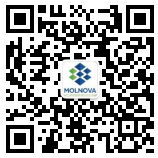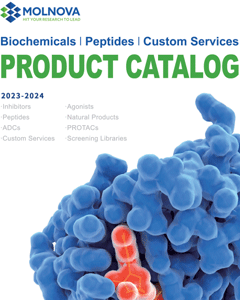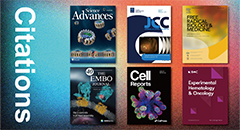
CNV1014802 hydrochloride
CAS No. 934240-31-0
CNV1014802 hydrochloride ( GSK-1014802 hydrochloride | CNV-1014802 hydrochloride | Raxatrigine hydrochloride | Vixotrigine )
产品货号. M16677 CAS No. 934240-31-0
CNV1014802(GSK-1014802、Raxatrigine、Vixotrigine)是一种有效的选择性 Nav1.7 钠通道阻滞剂。
纯度: >98% (HPLC)
 COA
COA
 Datasheet
Datasheet
 HNMR
HNMR
 HPLC
HPLC
 MSDS
MSDS
 Handing Instructions
Handing Instructions
| 规格 | 价格/人民币 | 库存 | 数量 |
| 50MG | ¥6861 | 有现货 |


|
| 100MG | ¥10854 | 有现货 |


|
| 200MG | 获取报价 | 有现货 |


|
| 500MG | 获取报价 | 有现货 |


|
| 1G | 获取报价 | 有现货 |


|
生物学信息
-
产品名称CNV1014802 hydrochloride
-
注意事项本公司产品仅用于科研实验,不得用于人体或动物的临床与诊断
-
产品简述CNV1014802(GSK-1014802、Raxatrigine、Vixotrigine)是一种有效的选择性 Nav1.7 钠通道阻滞剂。
-
产品描述CNV1014802 (GSK-1014802, Raxatrigine, Vixotrigine) is a potent, selective Nav1.7 sodium channel blocker, shows analgesic effects and potential in the treatment of cognitive symptoms of schizophrenia in vivo.Pain Phase 2 Clinical.
-
体外实验Like lamotrigine, both GSK2 and GSK3 were able to prevent the deficit in reversal learning produced by PCP, thus confirming their potential in the treatment of cognitive symptoms of schizophrenia. However, higher doses than those required for anticonvulsant efficacy of the drugs were needed for activity in the reversal-learning model, suggesting a lower therapeutic window relative to mechanism-dependent central side effects for this indication. Raxatrigine (GSK-1014802) received orphan-drug designation from the US Food and Drug Administration in July 2013.
-
体内实验——
-
同义词GSK-1014802 hydrochloride | CNV-1014802 hydrochloride | Raxatrigine hydrochloride | Vixotrigine
-
通路Membrane Transporter/Ion Channel
-
靶点Sodium Channel
-
受体Sodium Channel
-
研究领域Neurological Disease
-
适应症Pain
化学信息
-
CAS Number934240-31-0
-
分子量350.815
-
分子式C18H20ClFN2O2
-
纯度>98% (HPLC)
-
溶解度DMSO: ≥ 31 mg/mL
-
SMILESC1CC(NC1C2=CC=C(C=C2)OCC3=CC=CC=C3F)C(=O)N.Cl
-
化学全称2-Pyrrolidinecarboxamide, 5-[4-[(2-fluorophenyl)methoxy]phenyl]-, hydrochloride (1:1), (2S,5R)-
运输与储存
-
储存条件(-20℃)
-
运输条件With Ice Pack
-
稳定性≥ 2 years
参考文献
1. Bagal SK, et al. Bioorg Med Chem Lett. 2014 Aug 15;24(16):3690-9.
2. Deuis JR, et al. Toxins (Basel). 2016 Mar 17;8(3). pii: E78.
3. Zakrzewska JM, et al. Lancet Neurol. 2017 Apr;16(4):291-300.



 021-51111890
021-51111890 购物车(0)
购物车(0)
 sales@molnova.cn
sales@molnova.cn











